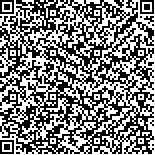| 本文已被:浏览次 下载次 |

码上扫一扫! |
|
|
|
| Depressurization mechanism and design principles of vortex drilling-bit |
|
ZHU Hai-yan1,2, DENG Jin-gen1, WANG Mo-zhai3, XUE Liang1, YAN Chuan-liang1
|
|
(1.State Key Laboratory of Petroleum Resource and Prospecting in China University of Petroleum, Beijing 102249, China;2.State Key Laboratory of Oil & Gas Reservoir Geology and Exploitation, Southwest Petroleum University, Chengdu 610500, China;3.College of Petroleum Engineering in China University of Petroleum, Beijing 102249, China)
|
| Abstract: |
| The drilling practice of oil and gas wells has indicated that reducing the bottom-hole pressure difference can significantly improve the rate of penetration (ROP). Vortex drilling-bit can reduce the bottom-hole pressure difference via a reverse nozzle to generate a vortex flow due to the high rotary speed of the drilling-bit. The depressurization mechanism of the vortex bit was analyzed. By using a hybrid mesh method, the key factors that affect the depressurization capacity of the vortex bit were investigated, which include axial angle, radial angle, reverse flow ratio, rotation speed, bit clearance, and distance between reverse nozzle outlet and the bottom-hole wall. The results show that backflow below the reverse nozzle outlet is the main reason that can decrease the depressurization effect of the vortex bit. A guideline for the design of the vortex bit is given to maximize the depressurization effect. The optimum axial and radial angles are 150°-180° and 60°-75° respectively, and the flow ratio of the reverse nozzle is best above 30%. The bit clearance should be kept below 3mm, and the distance between the reverse nozzle outlet and the bottom-hole surface can be 100-140mm. The rotation speed of the bit should be as large as possible. |
| Key words: drilling vortex bit bottom-hole pressure difference reverse nozzle numerical simulation |
|
|